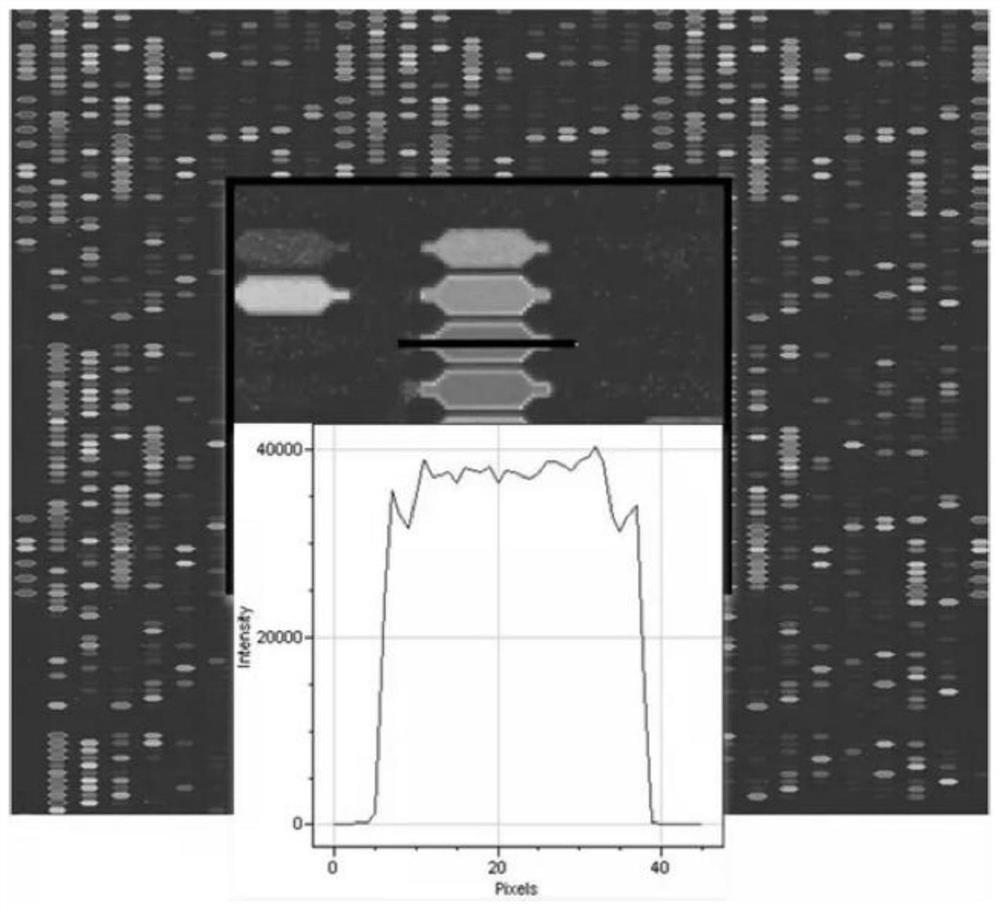Probes, chip, primers and kit for rapid detection of ophthalmic clinical microorganisms and application thereof
A technology of microorganisms and probes, applied in the field of microorganism detection, can solve the problems of cumbersome process, long return period of results, and inability to provide timely help for daily diagnosis.
- Summary
- Abstract
- Description
- Claims
- Application Information
AI Technical Summary
Problems solved by technology
Method used
Image
Examples
Embodiment 1
[0082] Primer Screening
[0083] The strain-specific DNA sequences were screened by genome-wide alignment. Download all the genome sequences of 9 pathogenic bacteria in NCBI, find the homology within the species >95% (most of them can reach more than 97%), and the homology between species <75% (most of them are lower than 70% or basically no homology between species) gene sequence segments. The summary table of genes used for screening primer sequences selected by various strains is shown in Table 3:
[0084] Table 3 Summary table of genes used for screening primer sequences selected by each bacterial species
[0085]
[0086]
Embodiment 2
[0088] Primer Design and PCR Validation
[0089] Firstly, separate primers were designed with primer5 for the DNA segments of each selected strain, and a batch of primers were screened out. Finally, primer selection was performed on the screened primers with DNAstat software to find out a more suitable primer combination. Synthesize the primer, add a fluorescent group (CY3) to the 5' end of the forward primer, so that the PCR product will be fluorescent, and then used for hybridization of the chip of the present invention and then scanned by a scanner to determine whether the hybridization probe is successful .
[0090] The primers screened and verified in Example 2 (as shown in Table 2) have high specificity and can generate readable fluorescent signals after hybridization.
Embodiment 3
[0092] Probe Design and Screening
[0093] The number of probes that can be accommodated by one LCS chip is: 3968 (31*128), in order to carry out probe screening in the largest range, the present invention carries out Tiling array probe design to the PCR product of each bacterium, promptly adopts equal length displacement method, Select a sequence of a certain length (25 bp in the present invention) from the beginning to the end of the target sequence to form a probe combination, wherein the adjacent probe sequences differ by one base until the entire target sequence is covered. According to the NCBI blast results of the PCR product sequence, for the segment with mutations, design multiple probe sequences according to the mutated bases. If a certain probe covers too many mutations (more than 3 mutations in 25bp), abandon this one. probe. Whether the probe is suitable for hybridization needs to be screened by performing a hybridization experiment, and the successfully amplifie...
PUM
 Login to View More
Login to View More Abstract
Description
Claims
Application Information
 Login to View More
Login to View More - R&D Engineer
- R&D Manager
- IP Professional
- Industry Leading Data Capabilities
- Powerful AI technology
- Patent DNA Extraction
Browse by: Latest US Patents, China's latest patents, Technical Efficacy Thesaurus, Application Domain, Technology Topic, Popular Technical Reports.
© 2024 PatSnap. All rights reserved.Legal|Privacy policy|Modern Slavery Act Transparency Statement|Sitemap|About US| Contact US: help@patsnap.com










